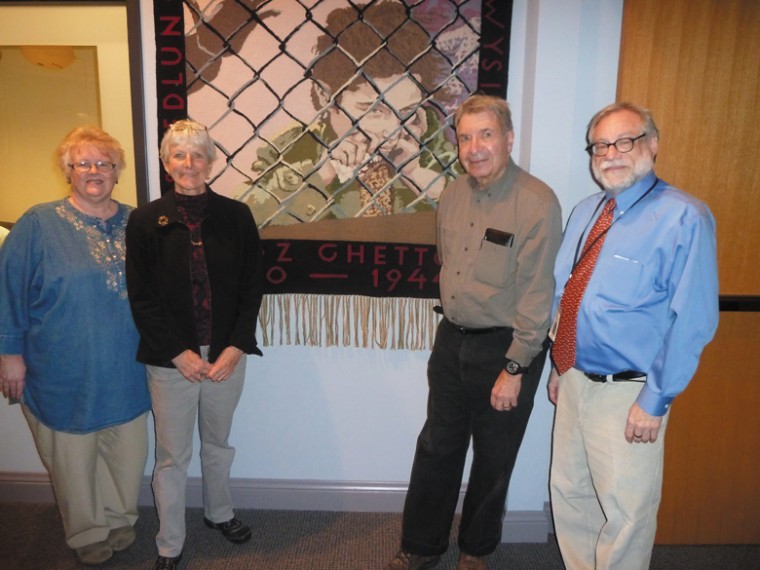HMLC exhibits Shoah-themed tapestries
Published March 14, 2012
A group of Holocaust-themed tapestries, one painting and one seriograph print, by the late St. Louisan Muriel Nezhnie, is currently on exhibit at the St. Louis Holocaust Museum and Learning Center in the Jewish Federation Kopolow building, 12 Millstone Campus Drive. The exhibition will run through April 30.
Nezhnie studied at the Cooper Union in New York City and later at Washington University. It was while she was stationed in Germany as an “army wife” that she discovered the art of tapestry weaving. There, she studied at the Offenbach Werkkunstschule, learning the German technique, in which the weaving is done looking at the image as it is being woven, from the “front.”
Nezhnie, together with her husband, artist-professor Sheldon Helfman, settled in St. Louis in 1959. She began the first tapestry of the Holocaust series in the late 1970s, by pouring through voluminous photographic records from the Library of Congress, the Pentagon, the YIVO Institute, Yad Vashem’s Archives, and microfiche at the St. Louis Center for Holocaust Studies (now the HMLC). She was especially attracted to images that conveyed dignity and endurance in the face of adversity.
Initially, Nezhnie created drawings, seriograph prints, paintings and full-sized “cartoons” in order to translate the black and white images into the textile medium. Through her artistry—her subtle use of color and textures—Nezhnie transformed stark documentary photographs into vivid, powerful expressions of the human spirit.
She was a pillar of the St. Louis arts community until her death in 2002. Ironically, she passed away on the date that corresponds with the 27th day of the Hebrew month of Nisan, the date chosen by the Israeli government for Holocaust commemoration.
Today, her works can be seen not only at the St. Louis HMLC but at synagogues and other places of worship, in addition to buildings and collections in the St. Louis community, and throughout the country.
















